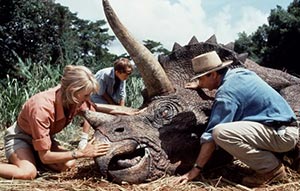

China's weak trade performance in recent months has not only brought downside risk to economic growth but also exerted severe pressure on employment, according to Australian and New Zealand Banking Group Ltd.
Citing recent job cuts by China Rongsheng Heavy Industries Group, the bank said the nation's unfavorable first-half trade situation has had "obviously negative effects" on the job market.
"Job cuts by some Chinese export-oriented manufacturers, to some degree, reflect the nation's current trade situation," said Liu Ligang, chief Chinese economist at the bank.
The bank surveys the economy each month.
China Rongsheng, the nation's largest private shipbuilder, said in a recent statement that it implemented "workforce restructuring and optimization" as it seeks to transform itself into an integrated heavy industry conglomerate with a focus on serving clients in the offshore energy sector, in response to a slump in the shipbuilding industry.
Orders for Chinese shipyards fell 23 percent year-on-year in the first five months, according to the Chinese Association of the National Shipbuilding Industry.
"If the weak performance persists in the coming months, China's target of 8 percent growth in trade will be hard to realize," Liu said.
Exports slid 3.1 percent year-on-year to $174.32 billion in June, according to the General Administration of Customs, while imports fell 0.7 percent at $147.19 billion, leaving a trade surplus of $27.13 billion.
In the first half, China's foreign trade neared $2 trillion, up 8.6 percent year-on-year, customs said.
"The figures in the past two months reflected the real condition of China's current trade situation, presenting a downsizing trend for the nation's economy in the near future," Li said. The trade slowdown has forced some manufacturers to cut staff as production and labor costs continued to rise, according to Li.
A growing number of traditional manufacturers in the Pearl River Delta region have turned to automation.
Chen Feng, deputy general manager of Guangdong Xinhui Auto Model, said the toy car producer imported equipment from Europe to avoid using too many assembly-line workers.
"We saw a small slide in overseas sales in the first half of the year. But our profits were not much affected because we did not need to pay too many wages to workers," Chen said.
Cai Xueqing, general manager of Chaozhou Chenhui Ceramics Co, said rising labor costs made it difficult for the company to find skilled workers.
"Wages have climbed nearly 10 percent so far this year. The situation is not good for most companies. Many workers have left factories because the export market is so weak," Cai told China Daily.
Cai said the ceramics business will remain difficult in the second half as many factors, including a stronger yuan, sluggish overseas demand and rising labor and production costs, put pressure on Chinese exporters.
The foreign trade climate index for businesses in the Pearl River Delta region, a major manufacturing base in China, fell below the threshold in the first half, according to an industrial survey released on Thursday.
The survey, by Shenzhen-based One Touch Business Services Co, a provider of foreign trade services, indicated that the index, which reflects Chinese exporters' anticipation of future operations, stood at 97.15 in the first half of the year.
Exports combined from some 2,000 companies covered in the survey grew only 3.7 percent year-on-year, the survey found.
"A growing number of manufacturers have not been operating since March, reflecting an unstable flow of workers and decreased orders," said Xiao Feng, deputy general manager of One Touch Business Services.
The index of labor costs in the delta region climbed to 111 in the first half, forcing some companies to cut their workforces to protect profits, according to Xiao.
 Models at Ford pavilion at Chengdu Motor Show
Models at Ford pavilion at Chengdu Motor Show
 Brilliant future expected for Chinese cinema: interview
Brilliant future expected for Chinese cinema: interview
 Chang'an launches Eado XT at Chengdu Motor Show
Chang'an launches Eado XT at Chengdu Motor Show
 Hainan Airlines makes maiden flight to Chicago
Hainan Airlines makes maiden flight to Chicago
 Highlights of 2013 Chengdu Motor Show
Highlights of 2013 Chengdu Motor Show
 New Mercedes E-Class China debut at Chengdu Motor Show
New Mercedes E-Class China debut at Chengdu Motor Show
 'Jurassic Park 3D' remains atop Chinese box office
'Jurassic Park 3D' remains atop Chinese box office
 Beauty reveals secrets of fashion consultant
Beauty reveals secrets of fashion consultant